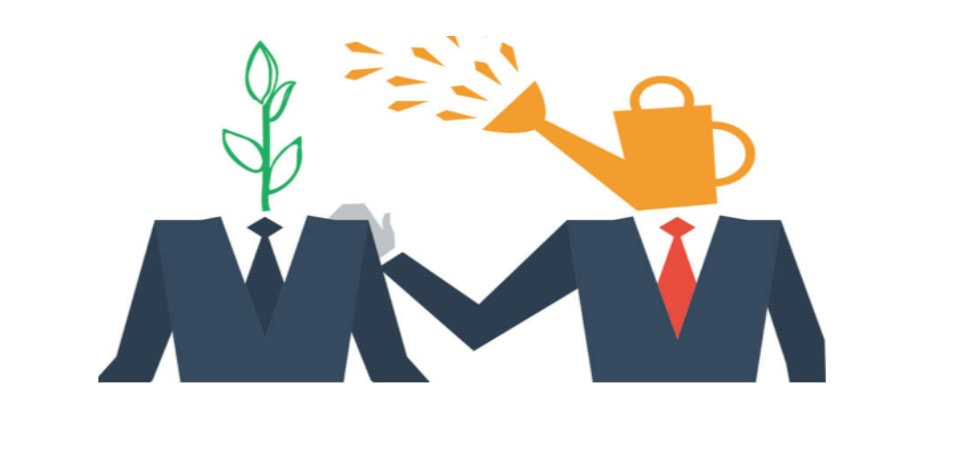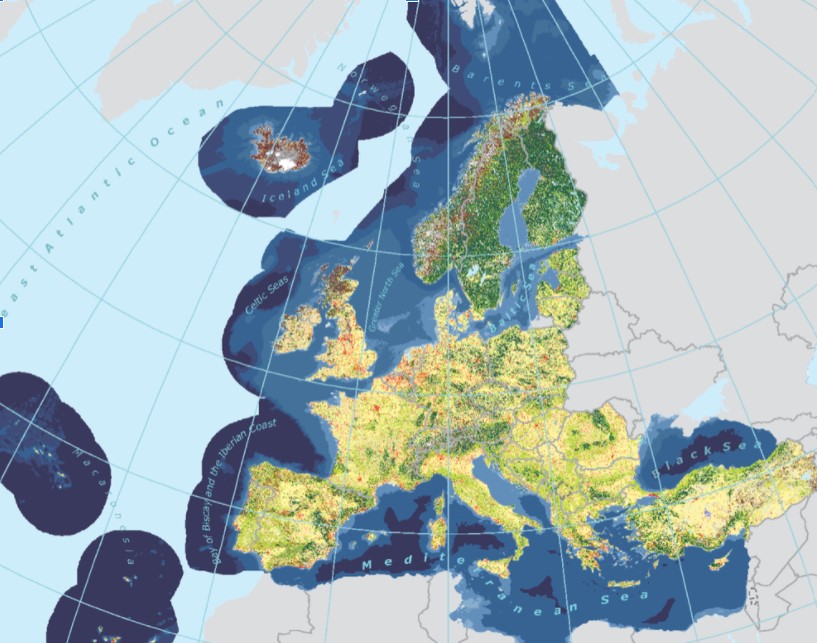|
This short article is dedicated to the mentors of social entrepreneurs who are the target group for the i2SustainIT project that we are realizing together with our partners.
The relationships between social entrepreneurs and their mentors are usually dynamic, personal, and fluid and the decision of an entrepreneur to have a mentor is usually a challenge. Mentors should suit the needs of social entrepreneurs and often must be changed over time. The entrepreneurs can have multiple mentors, a network that they can rely on for different things at different times. Each mentor brings with them a unique perspective, skillset, and history of experiences that the entrepreneur can leverage. We have found during the Impact Investment for Nurturing Sustainability project that “if we create proper support and some additional tools that enhance design thinking skills, abilities, and knowledge of the mentors of social entrepreneurs (facilitators, consultants, trainers, coaches, and investors), then the social enterprises will be able to achieve better impact on their target groups and on solving social challenges”. The design thinking integration into the mentoring process of social entrepreneurs can significantly contribute to one idea for social impact, go to a design of a technical solution and then successfully go to the market. This approach emphasizes the rapid prototyping of a solution for quick feedback and reviews whether to continue with the development or alter specific elements to adjust to what actually needs to be addressed. As Tim Brown from IDEO has defined, „design thinking is a human-centered approach to innovation”. For mentors design thinking is a mentee-centered, creative, and collaborative problem-solving methodology that they can use whilst working with the mentees (social entrepreneurs). It requires a set of attitudes and a way of thinking about the mentors’ own participation in the problem-solving process during peer-to-peer with the mentees. Design thinking for the mentors is an iterative process in which they seek to:
It is also an attempt of the mentors to identify alternative strategies and solutions that might not be instantly apparent with the initial level of understanding of the challenge assumptions the social entrepreneur had in mind. Thus, design thinking is a way of thinking and working as well as a collection of hands-on methods which the mentors have to know and to use in their work. Another finding is that design thinking is an expansive and iterative process. A good mentor should resist the temptation to jump immediately to a solution to the stated social problem as it is proposed by the social entrepreneur. Instead, the mentor first needs to pay attention and spend time determining what the fundamental issue that needs to be addressed is. The mentors' design thinking rule has to be that they don't try to search for a solution until the real problem is determined, and even then, instead of solving that problem, the mentors should try to consider a wider range of potential solutions and share them with the social entrepreneurs. Only then the mentors would validate the proposal of the entrepreneurs as reasonable. Key areas of expertise when mentors of social entrepreneurs perform whilst working with them are as follows:
As the mentors usually work individually with the entrepreneurs like coaches, they need to play all these three roles throughout the process. The mentor usually asks the entrepreneur to check the gathered information at the beginning of the process, to see the visualized ideas and to properly evaluate them, and to understand what solution the entrepreneur came up with to fix the problem. A problem might require many different types of expertise to solve, and many iterations to target the best solution. The mentor, that practices the design thinking approach, is more powerful when he/she has a highly diverse set of perspectives and areas of expertise. Design thinking requires the mentor to understand social entrepreneurs’ researches, to uncover the real needs and desires of the targeted market. In the peer work with the social entrepreneur, the mentor who uses the design thinking approach is focused on the social challenges and the needs of the target groups in general and in particular, on the understanding of the social entrepreneur for them. Then, grounded in research and fueled by creativity, the mentor and entrepreneur together come up with ideas, would create models of those ideas, and test those ideas in a cycle of iteration that moves toward a solution.  A social entrepreneur is defined as a leader or pragmatic visionary who can use the entrepreneurial principles to create:
As a way to achieve social impact the typical social entrepreneur usually creates social enterprise. A social enterprise is an operator whose main objective is to have a social impact rather than make a profit for its owners or shareholders. It usually shares the following characteristics:
Author Partners @i2 SustainIT Just as any business has to niche their market, social entrepreneurs must niche their impact. While the UN Sustainable Development Goals are a great framework for thinking about development, not many social enterprises can “wipe out global poverty.” Mentoring for Impact A lack of focus on specific, achievable impact goals can dilute the effectiveness of the entrepreneurs. Thus, the principles of social impact, that the mentor should follow are:
Mentoring for Leadership If you hope to scale your impact, and therefore your business, at some point you have to multiply your efforts by leading others. Then, communicating, coaching, creating culture and the following key skills start to take precedence over technical know-how.
Mentoring for growth, strategy and innovation A social business is, in the end, a business. Businesses survive and thrive from sustainable, profitable growth. This can be achieved by strategies for innovative and sustainable business models and revenue streams. Some nonprofits are doing well and doing good. And yet, they must grow a sustainable source of funding to create an impact. So, in a sense, money and mission are never totally detached. Author Partners @i2 SustainIT Social innovation aims to respond in an innovative way to the needs of society by building new relationships between the public, private and associations. Social Innovation can be regarded as an economic model, in most cases it is a hybrid, a combination of profit and no profit where both the economic sustainability of the project and its recipients count. There are various examples of social innovation, from micro-credit projects devised and promoted by the Nobel Peace Prize-winning economist Muhamad Yunus to technologies that can help those at a disadvantage. In practice, social innovation is expressed by responding in a new way to the needs of the emerging or already present society and building new relationships between the public, private sector and associations. More specifically, social innovation is related to the analysis of the context and the actors of reference, as well as a good use of available goods (promoting more efficient use of resources and, where possible, a reduction in their use); generates change especially in the long term; often uses technologies (even if they are not necessary and sufficient components) as levers on which to force to promote and/or disseminate news. Social Innovation projects can arise from many aspects, to mention just a few examples: the occurrence of a crisis, the need to reduce, for example, spending on or improving public services; but also from the analysis of the data collected from users of a solution already adopted, of technological evolution and so on. Once the field of action has been identified, the diagnostic process starts, that is, the acquisition of the data necessary to analyse the links between the factors that can explain why situations need to be improved. Social innovations must be made to grow and spread: often it happens by emulation, but mostly their adoption is determined by processes of interaction and modification because the same innovation will take different forms depending on where it was grafted. Governments also represent, or should represent, clients of social innovation. The final stage that characterises social innovation is the change in reference systems and this is especially true for those great innovations that have radically transformed some aspects of common life. Platforms and infrastructure help to achieve this (think of networks, building large databases to share information, etc.), but also training and involvement of the general public and regulatory push. The protagonists that revolve around these phases are the people, the organizations and the spaces that allow to carry on the innovation in this area. The individuals, or networks of individuals or organizations that present emerging ideas as well as users to buyers; we can then refer to the Hunters of innovations (dealing with discovering the innovations that can be adopted or replicated in their own reality); to the champions of innovation, mostly consultants; social entrepreneurs who work in large companies to develop practical solutions in response to social challenges and, again, social entrepreneurs in residences, that is called specifically to develop potential. We should also talk about teams for innovation, or those realities that encourage collaboration between different organizations and that are particularly useful especially if they are multidisciplinary. To do their part to support innovation and act as a connecting element between the various players involved, must be the Innovation Centres, that is, areas of aggregation where skills can be shared, and institutions. Examples of centres sharing expertise are CAN Mezzanine in the United Kingdom, Social Fusion in the United States and Hub in 12 cities across 4 continents, or the Centre for Social Innovation (CSI) a social enterprise with the aim of catalysing social innovation in its Toronto base and in the world, but also smaller realities. Examples of social innovation institutions are: the Department for Business, Innovation and Skills (BIS) in the UK, or the Office of Social Innovation (OSI) at the White House, as well as the NESTA itself or the Sitra in Finland. Author Partners @i2 SustainIT 70% of investments in Europe are divided: London still leads but Paris, Amsterdam, Berlin and Barcelona follow. Milan and Rome, however, are not watching. Here we look rapidly at the first two. London
If there’s a startup Eden in Europe, it’s definitely London. Despite Brexit, the English capital boasts many records and is a leader in the number of European scale-ups in five sectors: artificial intelligence, fintech, insurtech and industry 4.0. The London startup ecosystem is the sixth largest in the world. It is located behind only New York, Los Angeles, Boston and Tel Aviv. Although still behind the top 5, the European hubs are actually the fastest and the number of exits of London start-ups has quadrupled since 2012 to date because of the Brexit. The exchange programmes that universities have implemented in European countries, and European projects such as Erasmus could therefore exclude British participants. In addition, immigrants moving to the UK are three times as likely to be entrepreneurs as those born in Britain and London will continue to be a key player in the global startup ecosystem for years to come - Brexit or not Brexit. In London, coworking spaces with multiple locations are very common and this spaces are also used to mentor and coach start-ups by accelerator program, a series of large-scale tech/startup events and meetings. There are also several support organizations from foreign governments in London. For example, JETRO supports Japanese companies that want to expand into the UK market, Tech Italia manages a support and acceleration network for Italian companies and Plugin offers support to Polish entrepreneurs. The Irish government also offers a hub for incoming founders and runs programs such as City Insights to connect Irish companies to the London ecosystem. The events are a great starting point for the founders who have just arrived in the city. At least in the first two months the founders should try to participate in multiple events like New Tech Meetup each week to expand their networks and begin to know the territory in terms of who to talk to and where to spend their time. With four of the top 10 universities in the world (Oxford University, Cambridge University, UCL and Imperial College London) in London or very close to London, the city offers a wealth of highly qualified entrepreneurship programs and services such as the K-20 accelerator at King’s College. The UK government and the local authorities of the city of London have made a big push to make London the European Tech Hub in the last decade. There are a good number of public organizations that can help foreign founders with soft-Launching in the city. The Global Entrepreneurship Program of the Department of International Trade is very useful for connecting important ecosystem actors and investors. London & Partners, the London promotion agency, is also available to help founders with tax credits and programs without taking capital in return. Paris To date, in France there are 7 unicorns, companies that are worth more than a billion dollars but when 3 years ago Macron won the elections in France, many called him "the president startupper", for the passion and determination with which he had followed the theme of innovation in his previous assignments but above all for how, Personally, he convinced the big French companies and also the international corporate companies present in France to bet on the local founders. In Paris today there is the largest campus in the world for startups, Station F. In this context, half of the employees of French startups are talented foreigners who come from the rest of the world thanks to the network of about 100 cities where La France Tech is present, the organization that represents the French startup and technology ecosystem together with Paris & Co. French Tech offers equity-free funding for initial startup costs, covering up to 70% of eligible business expenses for entrepreneurs. Since its launch thanks to French Tech, over 3,000 startups have benefited from the benefits of this government grant. At the same time the French embassy has launched the ban Yei - Young Enterprise Initiative, a competition aimed at young innovative Italian companies interested in expanding their business in France with the aim of helping them to develop and find partnerships in Paris with financial instruments and support they can use, connecting the founders with the main players in the French ecosystem. France is one of the European nations that best supported the innovation ecosystem. The PACTE Act provides for six key measures to help start-ups : it reduces staff cost thresholds and related regulations; it reduces the cost of employee profit participation; it promotes crowdfunding by opening PEA-PME accounts for investments that come from crowdfunding, such as shares, fixed-rate bonds and mini bonds; it creates a legal framework for Initial Coin Offerings (Icos) to attract innovators from around the world, and to protect themselves from fraudulent crypto offerings; it simplifies the path of researchers wishing to start or join a company by simplifying the rules that currently separate the public scientific research sector from the private sector; and it encourages the protection of industrial property by strengthening French patents. Author Partners @i2 SustainIT Under the pressure of globalization, a myriad of civil society organisations and innovative entrepreneurial initiatives have been born in Europe, aimed at meeting social needs, not strictly economic. This is an attempt to respond with new forms to a more articulated demand for goods and services of social utility, such as care, health, education, training, occupational integration, social housing, environmental protection, cultural activities, scientific research, micro-credit, meeting needs generally overlooked by the logic of the market and the public services themselves. This innovation deals with a complexity not through pre-constituted models, but involving territories and individuals. The focus is on the quality of relationships, the customization of products and services, life paths and ongoing assistance. This led to an open innovation that tends to spread ideas, enhance the contribution of all, involves users of all levels and, in addition, designs platforms to facilitate the meeting of groups of people, also creating virtual organizations. To realise its economic potential, social innovation needs to operate in a dynamic and capitalised environment, offering potential supporters or investors maximum transparency. In this perspective, the virtuous relationship between social innovation and urban and semi-urban productive systems depends essentially on three factors: human capital, social capital, territorial governance. The urban and semi-urban systems, in fact, to compete successfully and to be part of the long networks of globalization must be guided by a territorial socio-economic governance, in which to engage local public bodies, banking institutions, the manufacturing companies and the organizations that in various capacities relate to social innovation. There are already numerous cases of "second welfare", that is, partnerships on the territory between profit companies and social organizations, which also involve local public bodies and banking institutions. Despite the experience already in place, however, the question of the relationship of social enterprises in the broad sense with local public bodies and banks (and with the world of specialized finance) remains open. As for the bank-business relationship, the most obvious problem is the information asymmetry, which limits the credit granted to this type of organization, already poorly capitalized. With regard to local public bodies, the unresolved issue is their ability to take primary responsibility for territorial governance, also in view of the preponderance of public funds in this field. A social infrastructure of this kind could arise in the form of a Public-Social-Private-Partnership (PSPP), involving all stakeholders in supporting a new development model, based on the Collaborative Economy. First and foremost, local public bodies, which would have at their disposal the elements needed to redesign social policies based on the revealed needs of citizens, the dynamism of social innovation and the mobilisation of additional economic resources. For their part, citizens and their associations, through a digital market-place, would have the opportunity to freely express needs, requests and proposals, find the proximity service that best meets their needs, participate in micro-financing and supporting innovative services, as well as expressing a real-time assessment of the effectiveness and quality of the service used. While social entrepreneurs in the broad sense would benefit from the platform to broaden their catchment area, strengthen their skills, develop new services in line with demand, intercept social vouchers and crowdfunding circuits, enter the market of social finance and project both public and private in the form of grants or equity. This digital backbone for social innovation would, over time, favour the transformation of the system’s actors from "stakeholders" (stakeholders) to "resource carriers" (assetholder), through the hybridization of different realities, cultures and models. In turn, the launch of the international market-place could be preceded by the experimentation of digital platforms in the different metropolitan cities, to be integrated later. The digital platform would offer the possibility of using a transparent and guided system of authentication and certification of processes. Author Partners @i2 SustainIT |
AuthorWrite something about yourself. No need to be fancy, just an overview. Archives
December 2021
Categories
All
|






 RSS Feed
RSS Feed



